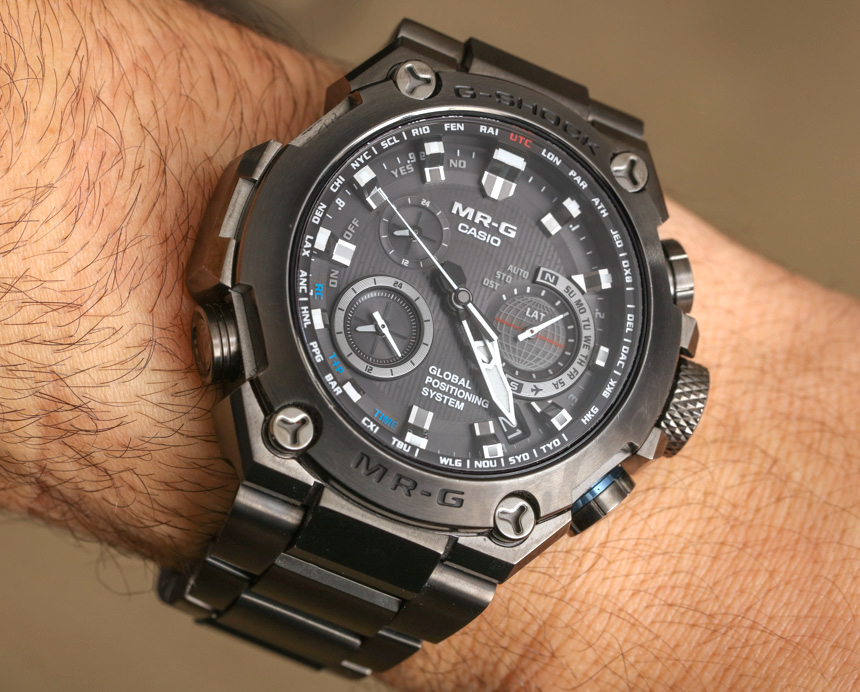
Casio recently celebrated the 20th anniversary of the MR-G family of top-grade G-Shock watches. The MR-G, or “Mr. G,” as Casio’s Japanese contingent calls it, is another member of the exclusive “high-end quartz” club of watches that I am personally sympathetic to. The story of the MR-G is part engineering, part marketing, and all passion from the dedicated designers at Casio who make durable G-Shock watches. The MR-G has come in a range of versions in its 20-year lifespan, but the MRGG1000 model collection, that includes the reference MRGG1000B-1A, is the first Casio MR-G watch to be officially sold in the US.
Ever since I went hands-on with the Casio G-Shock MRGG1000 back in 2014 when they were introduced, I wanted to review one. Given the price and the amount of engineering that goes into them, these are decidedly niche watches, but ones that will satisfy their owners fully. That is assuming, of course, the owners are not only ultimate gear and gadget lovers, but that they have the disposable income and style sense to invest a few thousand dollars into an uber-G-Shock with an all analog dial.
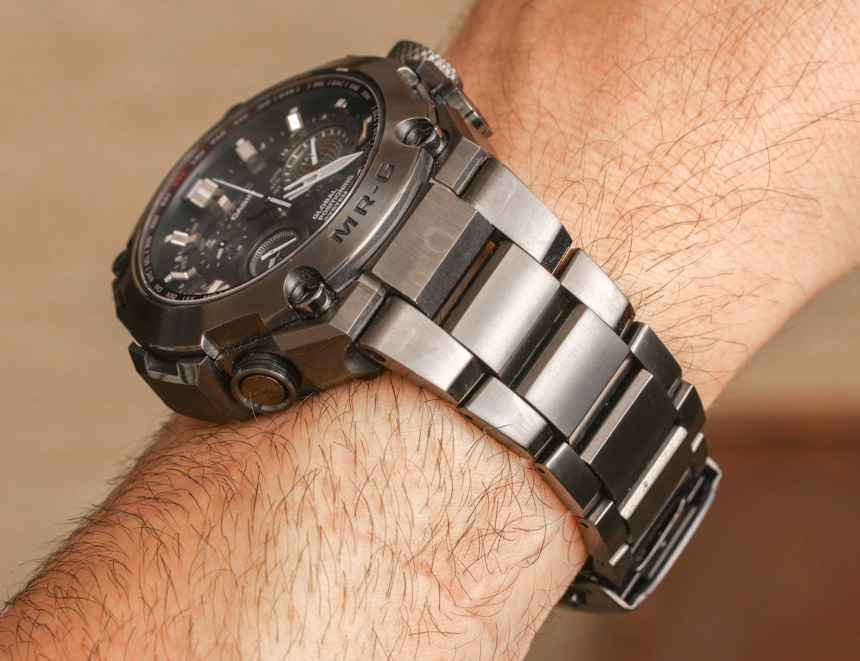
All four years of high school, I wore a Casio G-Shock watch. What I valued in my G-Shock at the time was its durability, high-functionality, easy legibility, comfort, and cool looks. It probably cost about $200 at the time. It’s actually interesting to think about how inflation really hasn’t affected the price of G-Shocks. Anyway, at the time not only did I not know there were several-thousand-dollar Casio G-Shock watches available, but if I was told there were, I could have never guessed what went into them. I’ve clearly come a long way since then, but throughout my review of the Casio G-Shock MR-G MRGG1000B-1A I kept asking myself, “what would the teenage version of me think about this watch?”
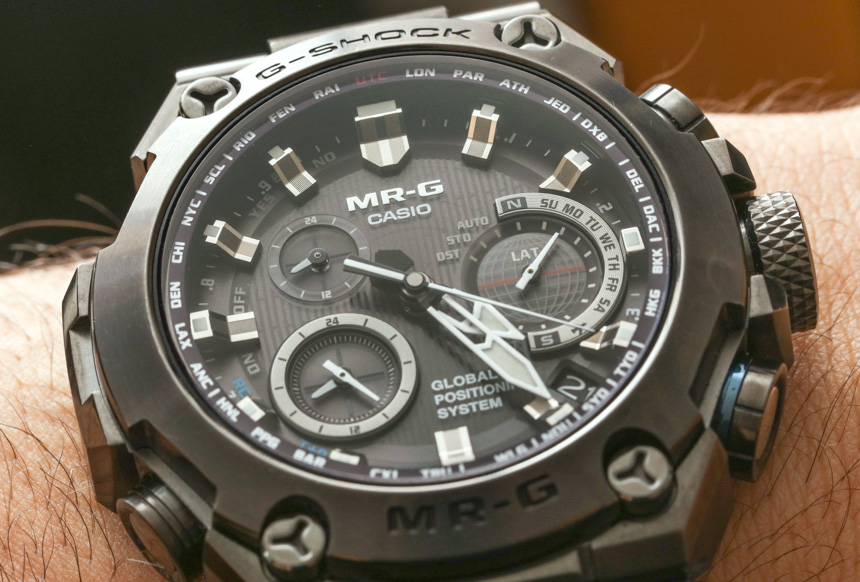
Teenagers clearly aren’t the target demographic for these watches, so why is that important? Casio obviously wants a youthful crowd wearing its timepieces, but model families like the MR-G are meant for people who grew up wearing digital G-Shock watches are supposed to graduate to once they get older and more mature. With that said, if I had one semi-negative thing to say about the MR-G, it would be that despite how awesome it is, it still isn’t a G-Shock that will look elegant on the wrist or formal. In other words, while there is definite fashion utility to it – this isn’t a watch to wear on a date. No, not yet, Casio… but you have still managed to produce yet another super-tool watch that won’t have to try hard to make other men jealous who don’t have one.
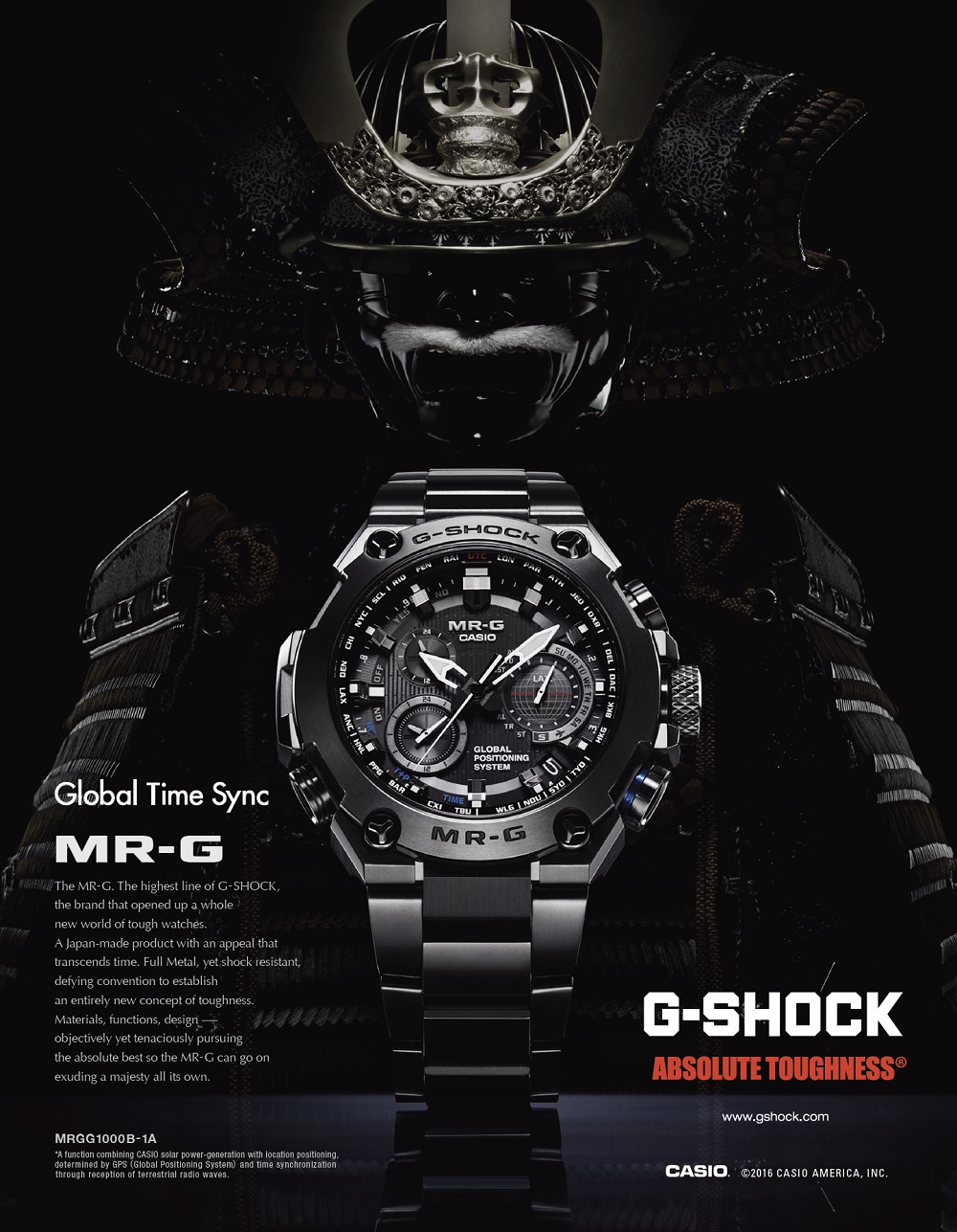
There is so much to say about the MR-G collection of watches that it is hard to even know where to start. I learned a lot more about them recently when I visited where Casio G-Shock watches are made in Japan. Casio currently has three levels of high-end G-Shock timepieces which are produced at their “Premium Production Line” (PPL) at their factory in Yamagata. In addition to famous cherries, the small city in the northern part of Japan also hosts G-Shock’s laboratory-style setting where some of the best modern Japanese tool watches are made.
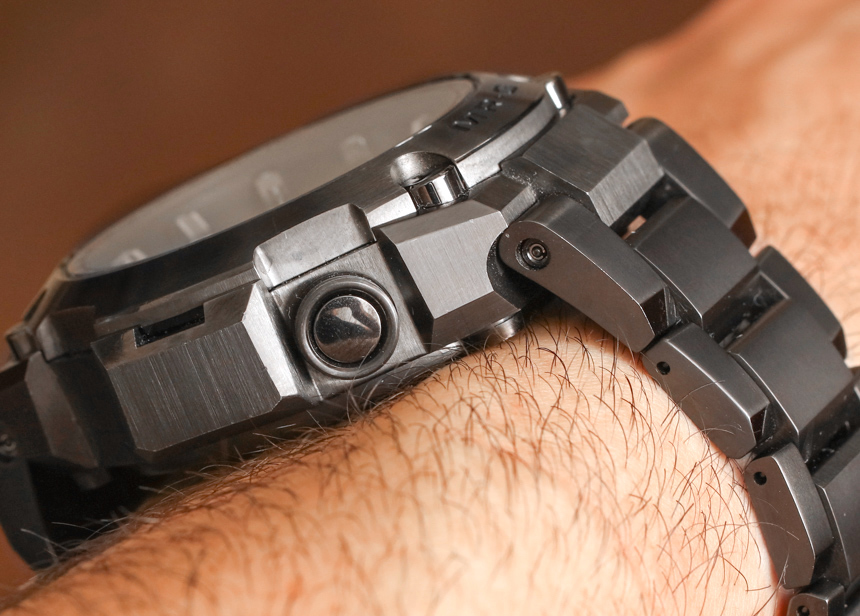
Casio’s high-end G-Shock collection starts with the “Master of G” collection, and then goes to MT-G, and finally MR-G. MT-G watches are sometimes easily mistaken for MR-G watches in their exterior looks. That is until you realize that there is sometimes a several thousand dollar price difference. There are simple differences such as the fact that MT-G watches are mostly in steel while MR-G watches are mostly in titanium, but as I believe Casio explained it to me, MT-G watches are basically metal-armored otherwise high-end G-Shock watches with resin skeletons, whereas MR-G watches have a totally unique inner structure and engineering. Apparently the MR-G watches, in addition to using even higher-quality materials, are built even more like a tank.
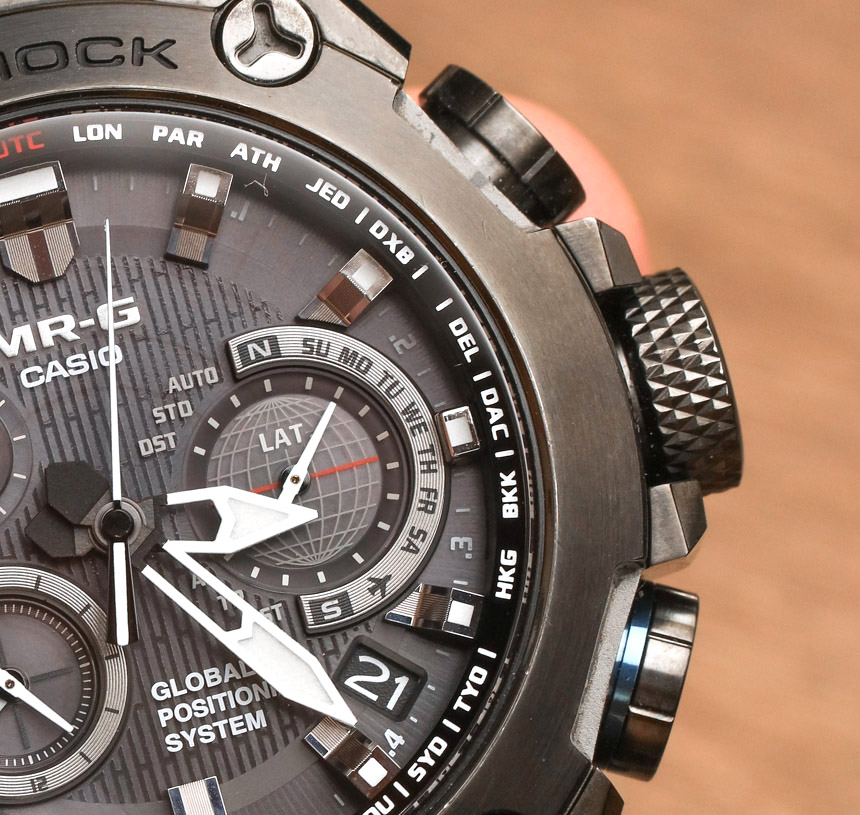
Visually you could argue that the Casio G-Shock MRG-G1000 collection even has the looks of a tank. Just look at the thick metal tubes which protect the pushers. This is among the most durable and armored watches Casio has ever produced, and its looks are almost entirely functional and not decorative. The watch is really built to take abuse, still look relatively new in the process, and keep on happily operating reliably in the meantime.
Once again Casio is able to make a really large watch that is comfortable to wear. In titanium and thanks to the case, lugs, and bracelet construction, I can easily say that while wearing the Casio G-Shock MR-G MRGG1000B you can forget it is on your wrist. The case is 49.8mm wide, 16.9mm thick, and 54.7mm “tall” from lug to lug. Yet it wears very sensibly. The bracelet comes with both full and half-links, and there are three micro-adjust pin bars holding in the locking deployant clasp, also featuring a cool sliding switch lock.
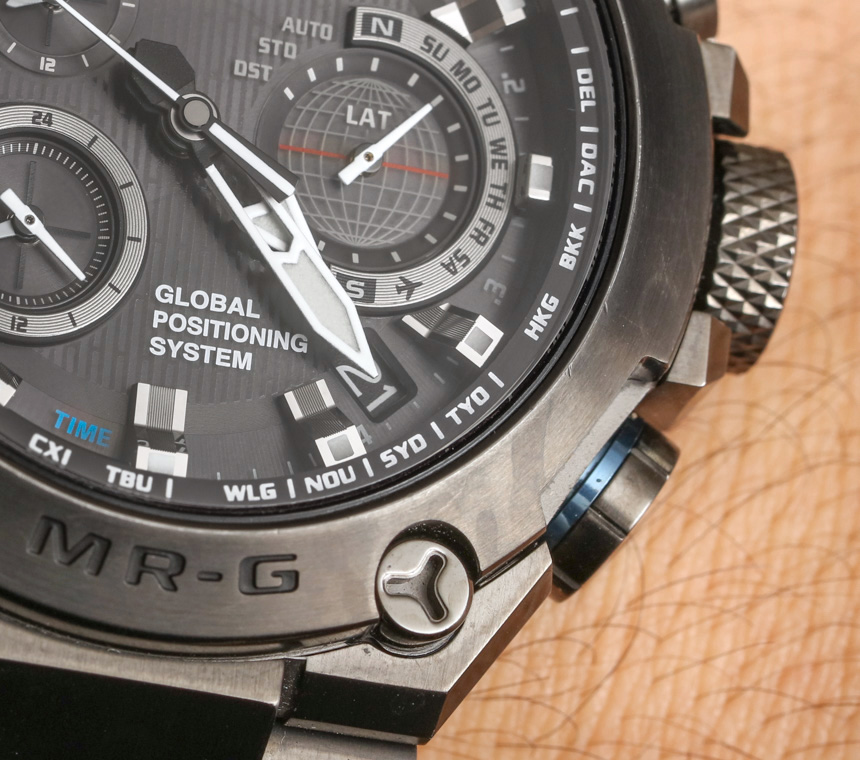
Note that this particular watch I am reviewing is a prototype that Casio has been more or less purposely abusing for a few years, and it still looks pretty good. Casio begins with a specially surface-hardened titanium, and in this MRGG1000B-1A the titanium is further coated in very hard DLC (diamond-like carbon). This means the watch is light and strong, as well as very scratch resistant. Over the dial is an AR-coated flat sapphire crystal. The case is water resistant to 200 meters.
One thing that Casio did not give to this G-Shock MR-G MRGG1000 watch model is a unique movement. Not that there is anything wrong with the movement, but it would have been nice to claim that in addition to the unique dial, case, and bracelet, there is a unique movement as well.
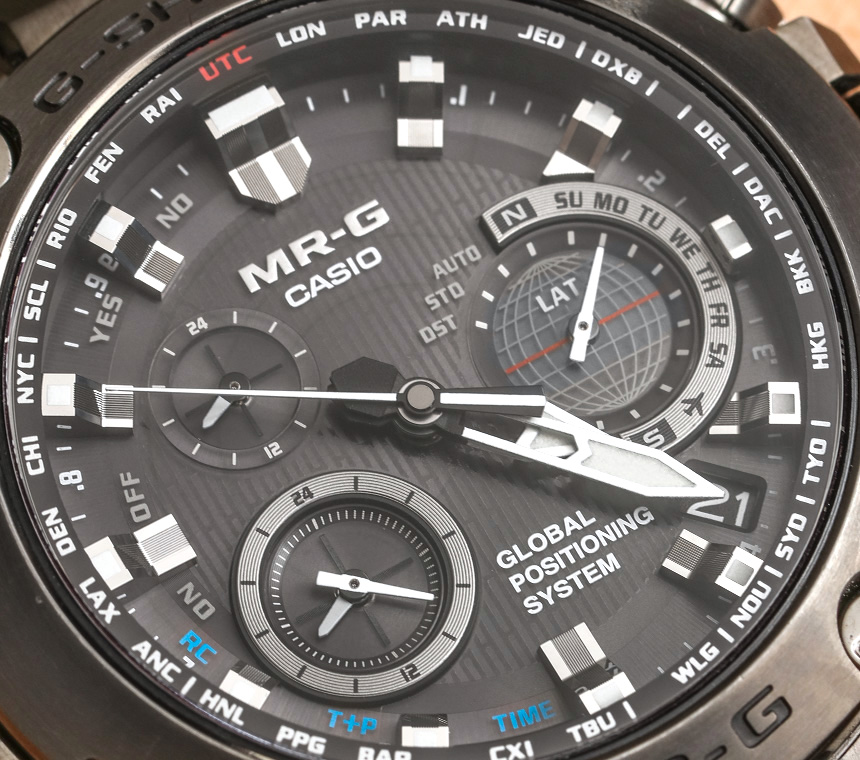
Various layouts of this movement style are available in both the Master of G and MT-G watch collection families. The movement does include more or less all of Casio’s best technologies including solar/light power generation of energy for the movement to charge the battery, “Tough Movement” technology that realigns hands if they are knocked out of place due to shock, and GPS Hybrid Wave Ceptor signal technology. The latter is essentially a movement that can receive radio signals from atomic clocks around the world, as well as GPS signals when the others are not available. You might argue that the GPS tech makes the atomic clock radio signal reception tech a bit redundant, but theoretically they each have upsides and downsides.
The movement also uses Casio’s Smart Access crown system, which is a way of operating the movement similar to a traditional watch using the crown. This leads me to one of the more interesting parts of the Mr. G story, and that it is how it originally evolved.
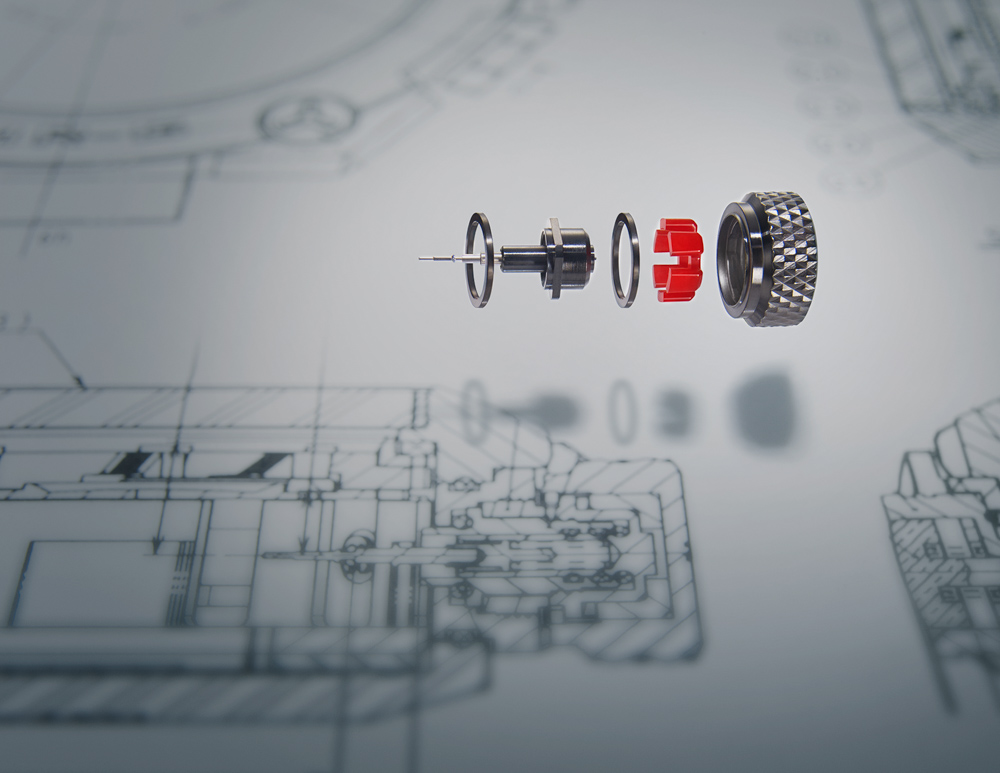
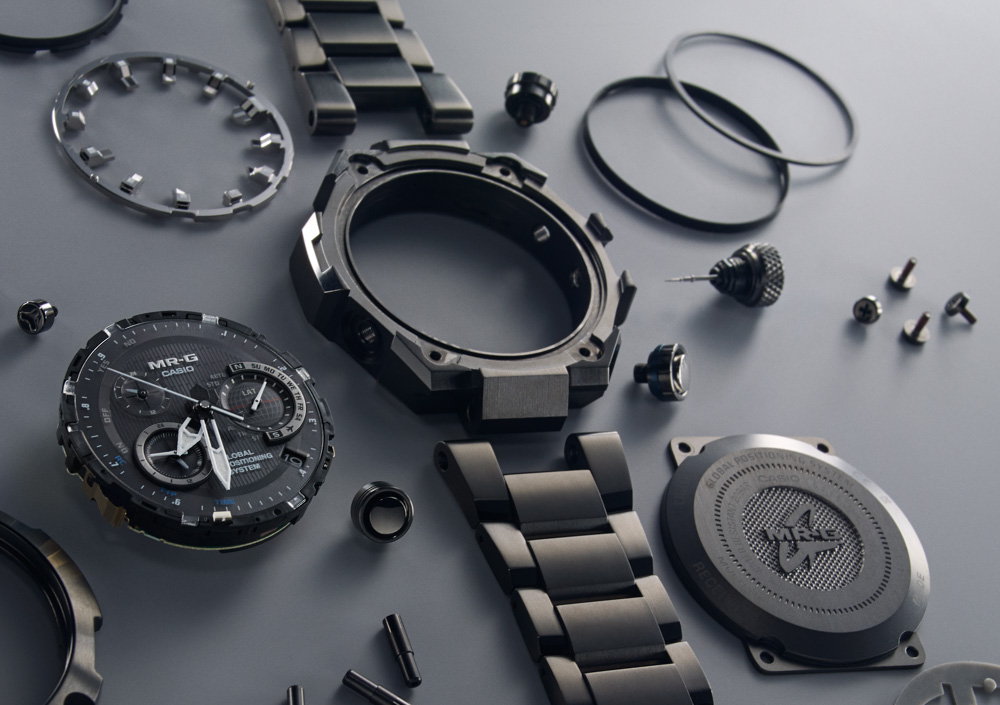
Most of Casio’s technology resulted from trying to develop the most effective and efficient solution to the problem of having a durable, legible, and functional watch. Analog-dial G-Shock watches are a bit different. For many people digital watches are superior in terms of being able to quickly and precisely read information on a dial. That means for the above purposes a digital dial-based watch is superior to one with an analog dial. Casio helped prove this fact, and was a major force behind helping the digital watch to take over the world of timepieces. Any yet, the G-Shock MRG-G1000 is just the opposite of that. It is a direct effort by Casio to take everything that people love and expect in a G-Shock watch, and put it in an analog package.
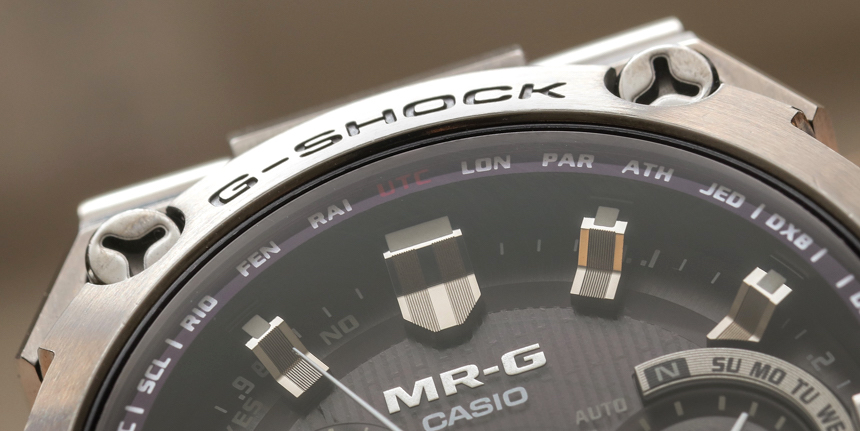
A good question is why. Not only why take an evolutionary step backwards, but why put in so much research and development effort into to making an analog watch in terms of dial, hands, crown, etc… that is easier to render in something that is digital. There are a few reasons for this. The larger reason is that Casio has determined a few important things over the last few decades. First is simply that adults who care about how they look and their status in life tend to prefer analog-dialed watches. Second (and related to the first), is that people who grow up wearing less expensive G-Shock watches are more likely to stick with the brand if they are given something that suits their more maturing needs and offers them something familiar and useful.
